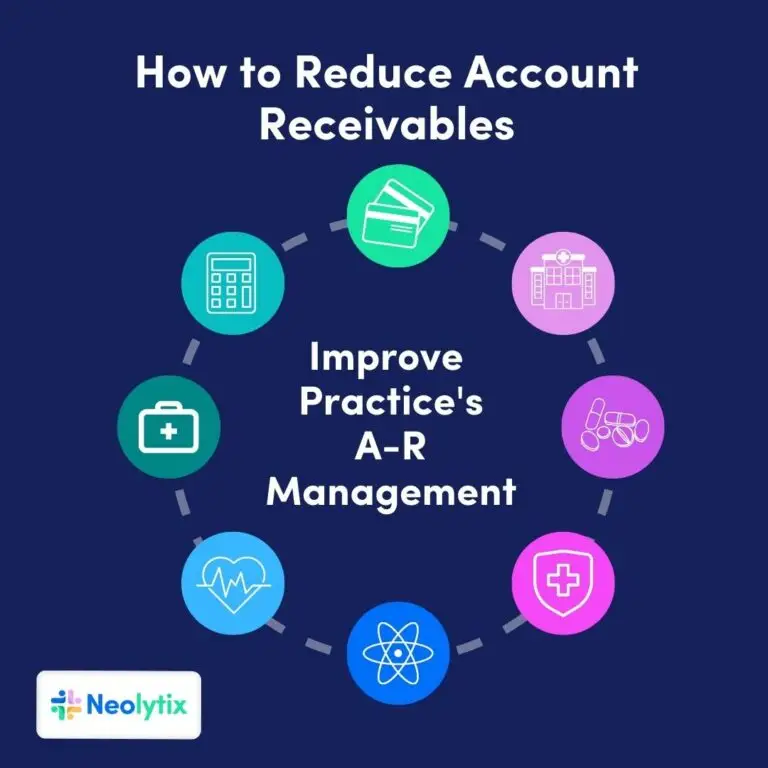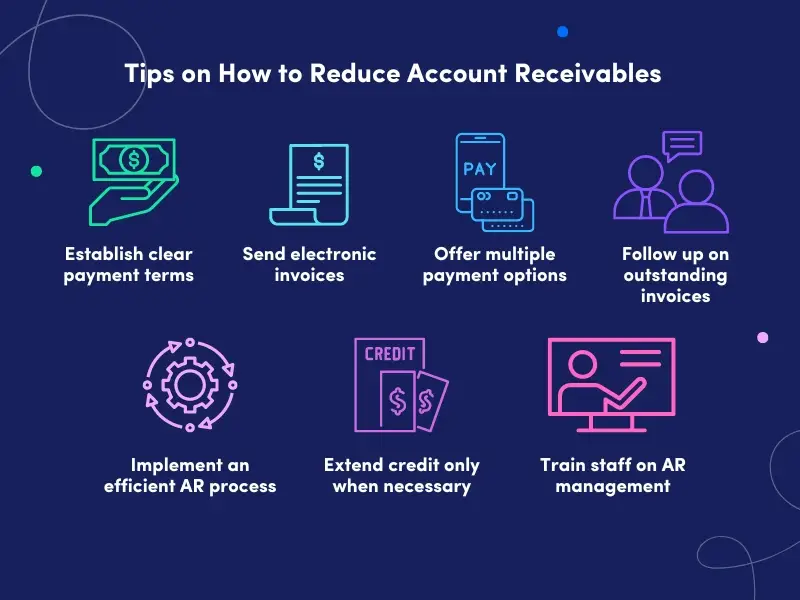As a medical provider, accounts receivable is a critical part of your business. However, outstanding receivables can lead to cash flow problems and create financial strain. Therefore, it’s important to understand accounts receivable and take steps to reduce outstanding invoices.
In this article, we will explore some tips on how to reduce your accounts receivable and maintain a healthy cash flow while still sustaining a good patient experience.
Table of Contents
What is Accounts Receivable in Healthcare?
Accounts receivable is the term used to describe the outstanding payments owed by customers to a business. Unpaid bills are recorded as assets on the company’s balance sheet for previous purchases. Customers must pay their bills within a year or less because it is required by law and helps the business.
Accounts receivable (A/R) in medical billing is the amount of money still outstanding from clients for the services that have been provided or billed and is an important KPI to consider when optimizing the revenue cycle management process. The list of individuals who owe you money can include both patients and insurance providers.

What Is Accounts Receivable Management?
Accounts receivable management for healthcare organizations involves tracking and collecting payments owed by patients and insurance providers for medical services rendered. Managing accounts receivable in healthcare is important for the organization’s financial stability and profitability in the revenue cycle management process.
It involves various activities, such as verifying patient insurance eligibility, submitting accurate and timely claims, and following up on unpaid or denied claims. Effective AR management also requires establishing clear payment terms, communicating with patients about their outstanding balances, and providing multiple payment options to make it easier for them to pay their bills.
Tips to Reduce Accounts Receivable
Healthcare organizations must implement a comprehensive AR management process to maintain a positive cash flow and maximize revenue. Below, we explore seven points to illustrate how you can reduce accounts receivable in your healthcare organization.

1. Establish clear payment terms.
The first step to reducing accounts receivable is to establish clear payment terms. Medical providers should communicate their payment expectations to patients upfront, including the due date. It is essential to have payment policies that patients can understand and follow.
Consider offering payment plans or accepting time payments if necessary. Additionally, ensure that patients understand that payment for services rendered is expected, even if they have insurance coverage.
2. Send Electronic Invoices
In today’s digital age, sending electronic invoices to patients is easier. This approach can save medical providers time and reduce the likelihood of errors associated with manual billing processes. Electronic invoices also enable providers to track outstanding invoices and send automated reminders to patients who have not paid. The use of electronic invoicing can significantly improve the efficiency of the accounts receivable process.
3. Offer Multiple Payment Options
Medical providers should offer patients various payment options to make it easier for them to pay their bills. There are various payment methods available for patients to pay their bills.
These include credit cards, online portals, bank transfers, and automatic deductions. These options can make the payment process easier for patients. Offering payment options can also help to reduce the time-consuming process of tracking down patients who have not paid.
4. Follow Up on Outstanding Invoices
Following up on outstanding invoices is essential to ensure patients pay their bills promptly. Consider sending out reminders before the due date and following up with phone calls or emails after the due date has passed. Medical providers can also use collections processes to recover outstanding balances from patients who have not paid. The key is to be persistent in collecting payments and follow up regularly.
5. Implement an Efficient AR Process
An efficient AR process is crucial to managing outstanding accounts receivable. Medical providers require a clear process for managing payments. This process involves sending claims promptly, chasing unpaid claims, and updating patients on their remaining payments.
Additionally, consider automating the AR process to reduce time spent on manual tasks. Medical billing companies like Neolytix automate processes and reduce AR by working with patients and healthcare providers for years.
6. Extend Credit Only When Necessary
Medical providers should only extend credit to patients when necessary. Consider requiring upfront payments for new patients or those with a history of late payments. Medical providers can also consider offering financing options to patients who cannot pay their bills upfront.
7. Train Staff on AR Management
The staff responsible for managing accounts receivable should receive adequate training. They should know how to explain payment rules to patients.
They should also be able to keep track of unpaid bills. Additionally, they need to contact patients who haven’t paid. Additionally, they should be proficient in using electronic invoicing or billing software to ensure the process runs smoothly.
Summary
Healthcare providers face the challenge of minimizing unpaid bills to maintain financial stability. Despite its time-consuming nature, this task is vital for profitability. By implementing practical tips and benchmarking their performance, medical practitioners can streamline financial management and boost future earnings.
Effective management of accounts receivable, a key component of healthcare revenue cycles, is integral to Neolytix’s expertise. Improving revenue cycles, including AR, not only enhances financial health but also elevates the patient journey. Neolytix employs cutting-edge communication platforms to ensure accurate billing, transparent processes, and clear patient interactions.
Through AI-driven analysis, Neolytix gauges patient sentiment and offers detailed reports for continual improvement. Schedule a complimentary consultation today to discover how reducing outstanding payments can optimize cash flow and elevate patient satisfaction.
Request A Free Consultation
"*" indicates required fields



